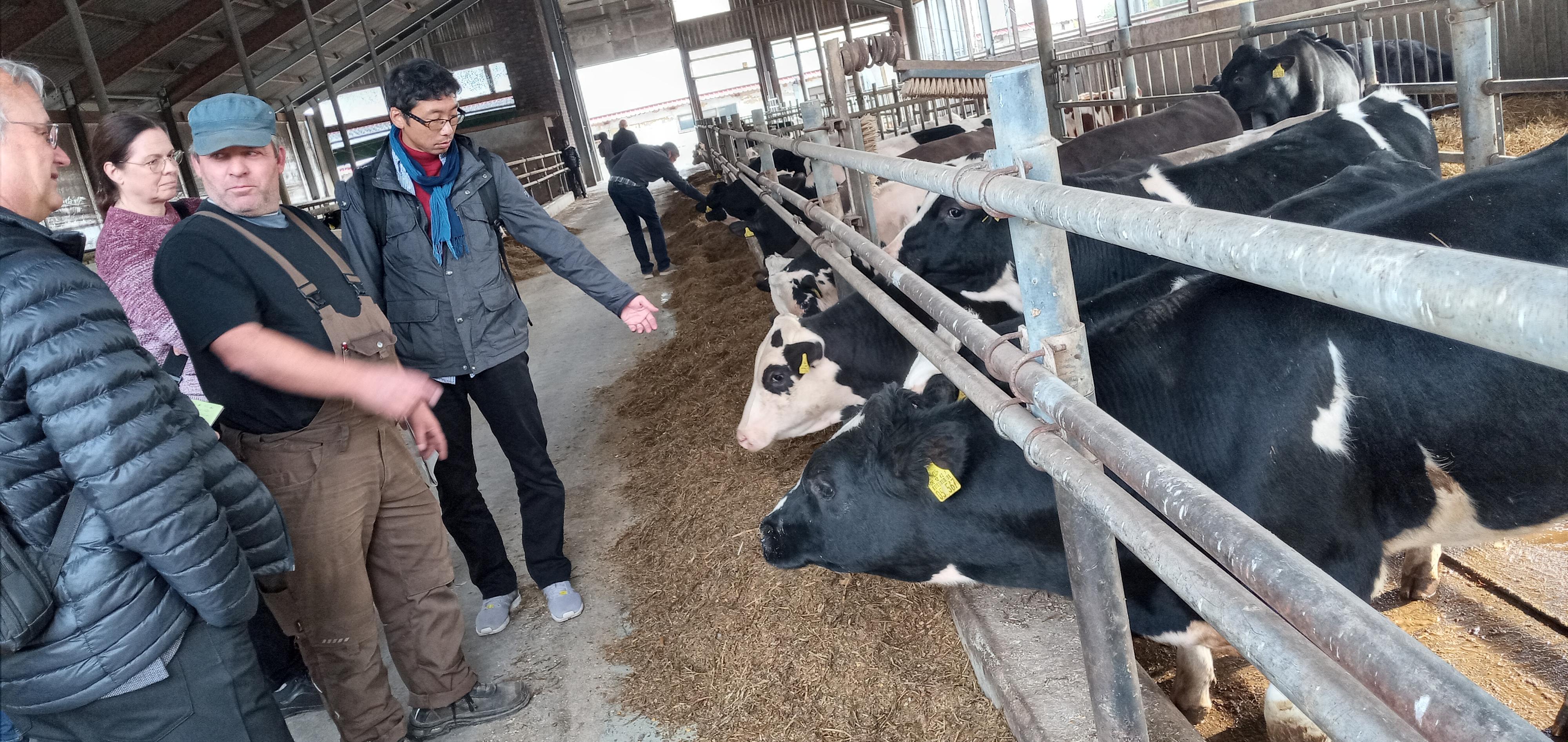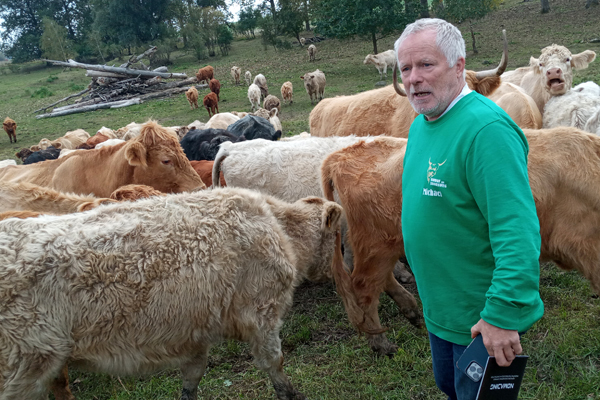Lessons from Germany on mixed farming

Michael Chickowsky explains how he breeds his cattle.PhotoS/Lominda Afedraru
What you need to know:
- Most farmers keep cattle both for beef processing and dairy. They also rear chicken and goose.
Berlin, the capital of Germany, is one of the most populous cities in the country, with a population of about 3.6 million people.
Being a vibrant city and the seat of government, the area is home to tens of high-rise buildings and hosts the headquarters of several multinationals and local companies.
Away from the skyscrapers, however, are large crop and animal farms that feed the millions in Berlin and beyond.
Seeds of Gold team visited one of the farms in the country to see how the Germans practice farming.
After a one-hour drive towards the Polish border where most farmers are located, the team was welcomed by an organised farming system where farmers demarcate the land for different types of farming crops.
These include growing of canola for processing cooking oil, wheat, barley used both as wheat flour and barley flour for human consumption and beer making, sugar beet, maize mainly for animal feed, oats and Irish potatoes.
Most farmers keep cattle both for beef processing and dairy. They also rear chicken and geese.
Seeds of Gold visited two farmers; one rearing cattle for beef and growing wheat and barley for fodder and the other rearing chicken.
Organic farmer
The more than 40-acre farm run by Michael Chickowsky is home to 80 cattle, 750 geese and 200 chicken. It can be described as modern in every sense of the word, thanks to its advanced use of technology which is fully integrated in livestock production.
Michael Chickowsky has been in mixed farming business since 2010 and over the years he has modernised his farm to the point that every aspect of it is automated.

In 2010, Chickowsky started his journey as farmer after constructing beautiful home, offices and a well-equiped slaughter house.
“I started farming with a bull and a cow but previously I was breeding horses which did not fetch much income and I abandoned it. My father was a baker and my mother a nursing officer. We are eight children and I give thanks to my wife who encouraged to join farming,” says Michael.
Hygiene is key
We find him at the entrance of the vast farm waiting to welcome us.
“This farm is disease-free and must remain so,” he says as he offers to take us around in his car. “For you to get into contact with the animals, you must bath first, wash your hair and put on specific disinfected clothes to reduce chances of transferring infections to the animals,” he adds. He has also a plantation of forest covering 200 square metres and during Christmas season he sells Christmas trees each at €100.
Market
Each year he is able to slaughter between 10-20 heads of cattle and the number of geese is not counted because they reproduce so fast.
Each cattle has to be marked with a sign to avoid authorities from over taxing the farmer.
The chicken are reared for egg production and each of them lays between 50 and 60 eggs before they are slaughtered for sale.
Each egg is sold at €50 cent on farm and 200 cent in outdoor sale and he is planning to re-stock the chicken.
Normally he sells 54 percent of the cattle beef after removing the skin and the bones which are mainly sold to people who keep dogs.




